Types of melon – Melons included to the botanical family of cucurbitaceae. Melon fruits are widely adapted in some areas of the world and also grown in numerous countries. Melon plants are vine crop that grown in the tropical and sub tropical areas such as Asia, and African.
They have highly water content up to 90%, so that their texture are juicy and sweet in taste. Melon fruits are one of the most wanted fresh fruit while summer come for consumed as dessert, salad, and juice. These containing of nutritions are carbohydrate, protein, folate, niacin, vitamin B6, vitamin A, copper, iron, phosphorus, and manganese.
These fruits have health benefits due to their nutritional contents. Such as Anti-Cancer Properties, heart health, cures kidney disease, digestive health, energy booster, weight loss, maintains healthy skin, promotes hair growth, and others.
Melons divided to some types that different in shape, color, sweetness, size, and texture. Over all, the most favorite types are casaba, cantaloupe, honeydew and Persian melon.
But Ten Me (Melon varieties) Melon has the most amazing price because those are only found in the small area in Japan. The following texts are the list of melon types that you might never know.
Melons, cantaloupe, raw nutrition facts information
Melon facts
- Melon is a climbing or creeping plant with large leaves and yellow flowers. Melon belongs to the Cucurbitaceae family (cantaloupe and watermelon). Melons produce sweet summer fruit and are an excellent source of fiber, vitamins and nutrients.
- There are various types of melons, including varieties with green, white, orange or yellow flesh or skin, and oval or cucumber-shaped round shapes.
- Melon is a warm annual period plant. Melons prefer warm areas to grow well and have no frost tolerance.
- Today, melons are grown in almost all tropical and subtropical areas. China is the largest producer of melons. Turkey and countries around the Mediterranean are also melon producing countries.
- The pollen grains produced by melon blossoms are relatively heavy and cannot be adequately transferred by wind. Fruit arrangement relies on the activity of bees and other beneficial insects that distribute pollen. In large commercial melon farms, placing 2-3 strong hives per hectare at the time before flowering is almost necessary.
- Harvesting melons when planting from seed takes an average of 100 to 130 days. Most varieties are ready for harvest 78-90 days after planting. If we can pull the stems from the fruit easily, then our melons are ready to be harvested.
List of melon varieties around the world
Bitter melon
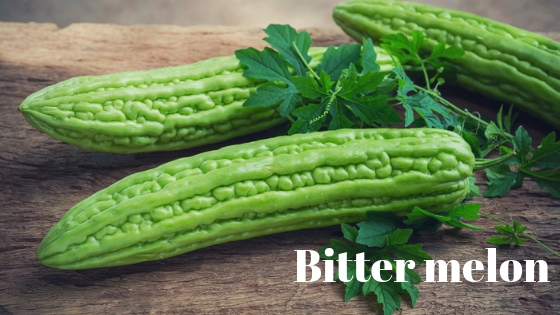
This type of melon commonly called “pare” in Indonesia. Its shape looks like elongated with dark green in the skin, and white-fleshed. Bitter melon widely used to a vegetable than fruit because its taste extremely bitter and should be cooked to get better taste, such as soup.
In fact, this fruit is utilized as medicines for some countries such as Chinese, Korean, and Japan. This fruit is fine grown in tropical areas such as African and Asian.
Bitter melon or known as a bitter gourd with Latin name Momordica Charantia is a tropical plant.
Besides its bitter taste and its distinct shape with melon in general, bitter Melon is also known to have health benefits.
Including Rich in nutrients, can lower blood sugar levels, fight cancer cells, can reduce cholesterol levels, help lose weight.
Cantaloupe
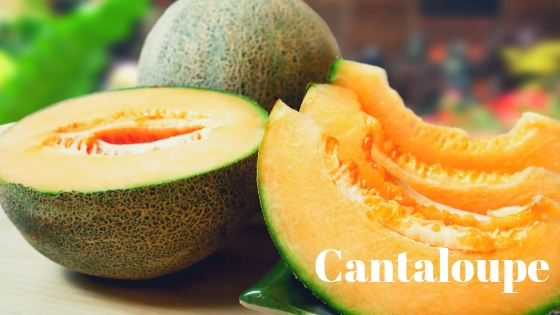
This fruit is the most favorite melon in the Europe, that usual consumed as salad and dessert. Cantaloupe has round shape and rugged yellow in its skin, but orange fleshed and sweet.
It can grow up to 5 kg in weight. This melon being nutritious because consist of numerous betacarotene, antioxidant, vitamin, and also carbohydrate as energy.
Watermelon

Watermelon is being origin from desert south African. Its taste sweet and juiciest because higher water content than other melon varieties. It has more than one flesh color such as yellow, white, red, orange, pink, and mixed yellow red.
Color skin of water melon is green with white elongated strip. It widely grown in China, Turkey, Spain, USA, and Iran. Learn how to grow watermelon.
Honeydew
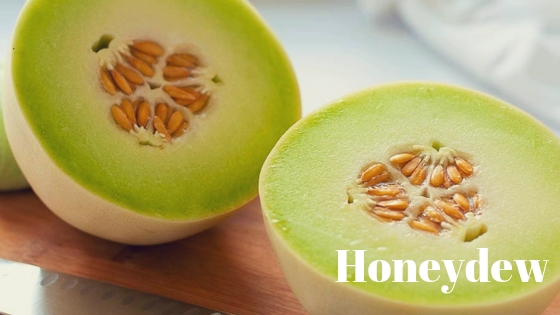
Honeydew widely produced in Arizona, Texas, and California. This melon shapes are around to oval and weigh up to 4 pounds. its rind is smooth, between greenish to yellow in color, and its flesh color is creamy green.
Honeydew is also known as green melon that taste is sweet and juicy which as favorite fruit eated as dessert or cutting fresh.
GAC melon
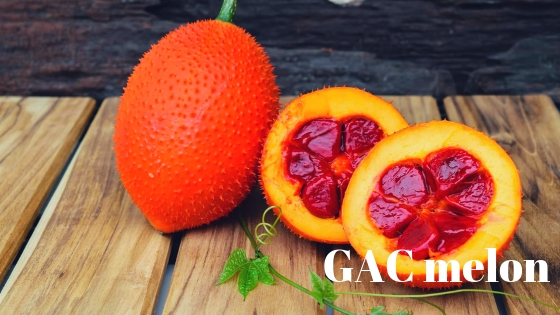
This type of melon is commonly found in southeast Asia, mainly in Vietnam where it consumed at ceremonial or festival. Each GAC plant produces more than 30 fruit in every season.
GAC is also called red melon because of its flesh color. The rind is light orange and has unique falvor. It is containing of highly betacarotene and vitamins that has human health benefit.
Winter melon
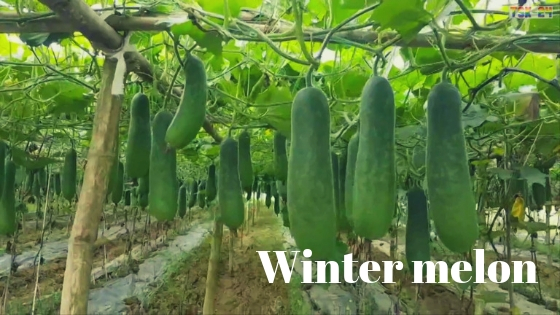
Winter melon is also known as winter gourd, ash gourd, or white gourd. This melon variety is beginning found in southeast Asia, and now it is widely grown Eastern and Southern Asia.
Winter melon has elongated shape with smooth and green in rind color and white flesh. Its length can be up to 30 inches. its sweetness between a pear and a honeydew fruit. Winter melon usually consumed as vegetable doing the winter.
Sprite melon
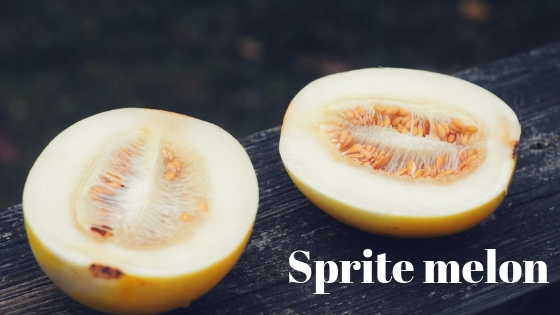
Sprite melon is similar to honeydew fruit, this crop is sourced from Japan. The taste of sprite melon is sweeter than other melon varieties. It has round shape, and the weight is range from 1 to 1.5 kg. this melon flesh color is white, while the rind color ranges from white to yellowish.
Sprite melon does not only contain flesh and peel, but also brown seeds. This melon fruit is so juicy and sweet that fit as an ingredient of salad or dessert.
Korean melon
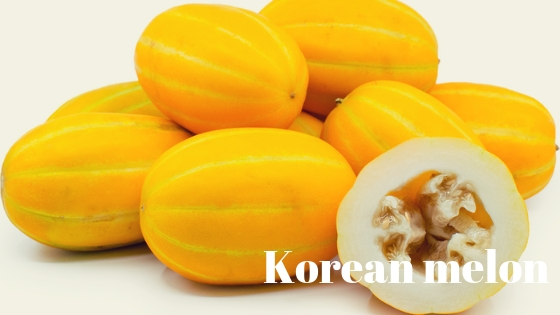
This melon fruit also known as oriental melon that can be easily found in east Asia. The Color rind of Korean melon is light yellow with white elongated strip. Its flavor is sweet, juicy and it is delicious when eaten as salad, or cutting fresh.
The taste closed to between a honeydew fruit and a cucumber taste. The sweetness is lower than other western melon varieties. Its water content reached to 90%.
Canary melon
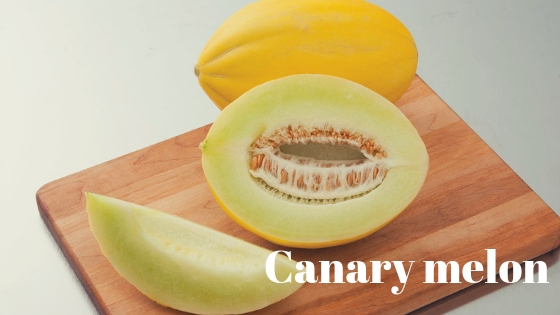
This variety is usually found in some of Asian countries such as Japan, Morocco, and South Korea. This melon shape is round to oval and likely waxy smooth, bright yellow in its rind color.
Canary melon flesh is white that mostly like the flesh of a pear even softer than, and its taste is sweet and juicy.
Charentais melon
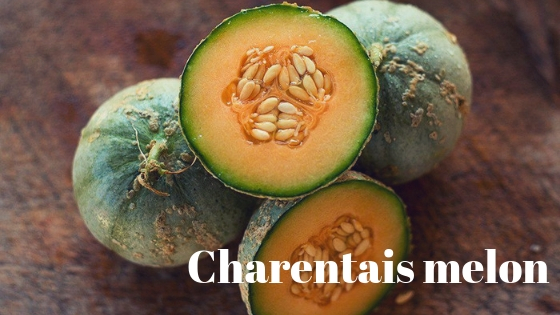
This melon variety is mostly similar to cantaloupes in flesh color, but its size is the smallest of melon varieties. Its flavor smell is unique and pleasant.
Charentais melon sourced from France, and widely grown in North Africa and United States, and they also being produced of big scale of this melon.
Bailan melon
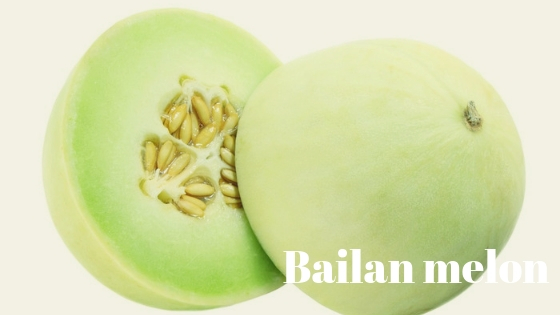
This melon variety is popular and grown in China. Bailan melon have shape and color mostly similar with honeydew fruit that has light green flesh color and white in skin color. the taste is sweet and juicy that rich of vitamin, protein and minerals.
Hami melon
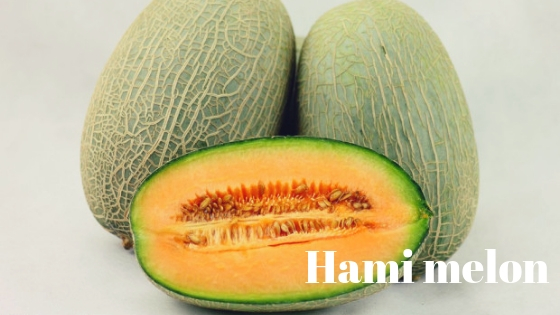
Hami melon is sourced in Xinjiang, Chinese. It is also known as the snow melon or Chinese Hami melon that its rind color is commonly white or yellow-green.
Hami melon has round shape and its flesh color is Orange. This type is mostly similar to cantaloupe melon, and even we would not find the disparity between them.
This melon fruit is sweet and crunchy in taste, and it is usually eaten as salad or cutting fresh.
Santa claus melon
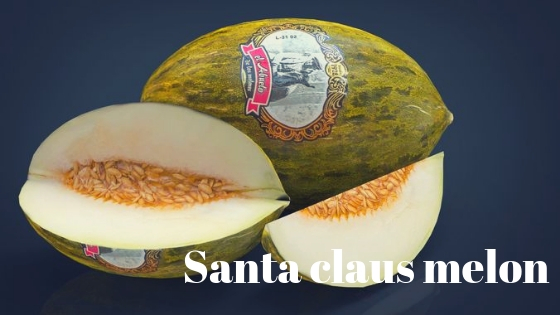
This melon fruit also commonly called Christmas melon is originated from Spain. Santa claus melon has a round oval shape. Dark green and browns are dominate color in its thick rind, the color flesh is green to white.
Its taste is sweet and creamy that mostly similar to cantaloupe, and its flavour nearly similar to honeydew fruit. Santa claus melon is containing of potassium and low carbohydrate.
Rocky melon
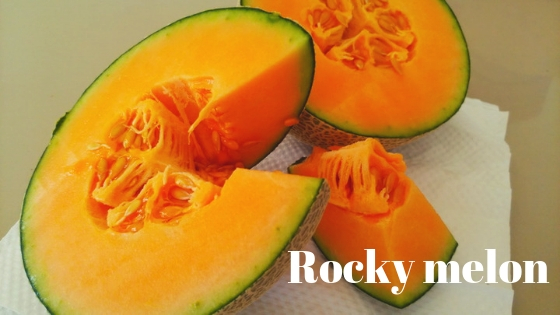
Rocky melons has yellow to orange in thick rind color, and its weight up to 4 pounds. Its color flesh is green and the taste of rocky melon is sweet and juicy and also has the flavor range between a cantaloupe and a honeydew.
This fruit is always available while the summer to be consumed as dessert or salad.
Golden langkawi melon
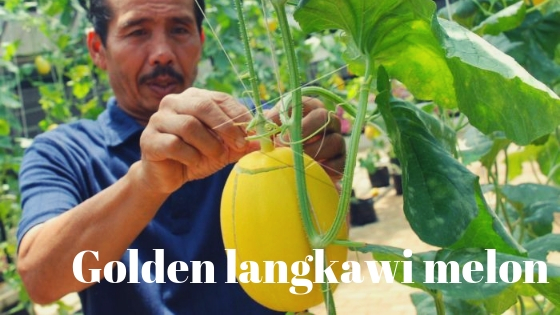
This type has round to ellipse shape, and the weight reached to 6 pounds. its texture is so crunchy and. Its rind is smooth and yellow in color. the color flesh is white, and containing of high sugar and high water content, so that the taste is sweeter, juicy, crunchy, delicious.
Golden Langkawi melon can be cultivated in poly bag or plastic pot if you have small garden. This melon also easy to plant and has shorter harvest time.
Apollo
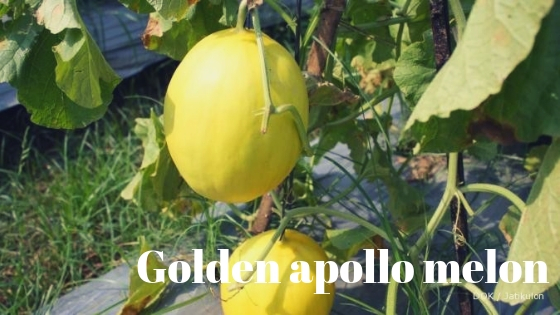
Apollo melons has highly water content and also rich of minerals and vitamins that has human health benefits. its rind color is golden yellow with elips shape, and the flesh is white which taste is sweet, juicy that lately, this melon variety is widely grown in Indonesia.
This fruit nearly similar to the Golden Langkawi melon but their skin completely different. The apollo is favorite fruit which consumed as dessert, salad or cutting fresh.
Honey globe
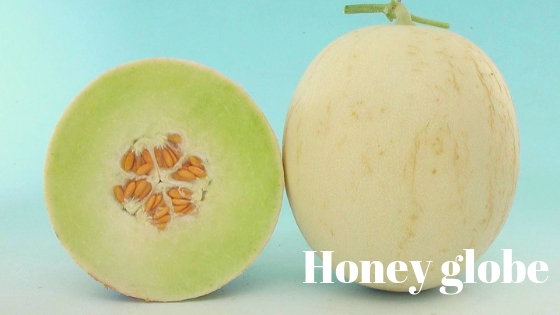
The Honey Globe included of superior melon variety that has round shape, the skin color is green in and its weigh can grow up to 9 pounds. Its flesh is so juicy, thick, and extremely sweet, because of containing sugar for about 19% of the weight.
Honey globe plants is quickly to grow that doesn’t need more treatment. It is resistance from crops disease, and takes only short time to be harvested.
Autumn sweet
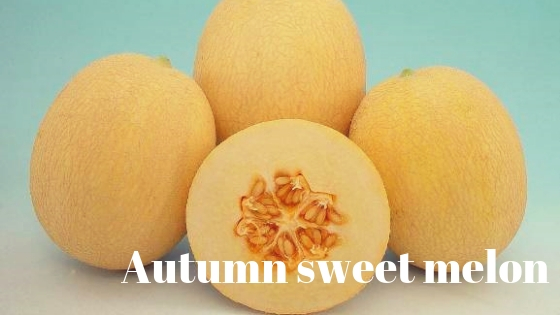
The Autumn Sweet melon has round shape and golden yellow in rind color. Its weighs can be up to 4 pounds. Consist of hing water content and carbohydrate, so its taste is very sweet and juicy in texture. It has a thick white flesh that is delicious and unique taste.
Sky rocket melon
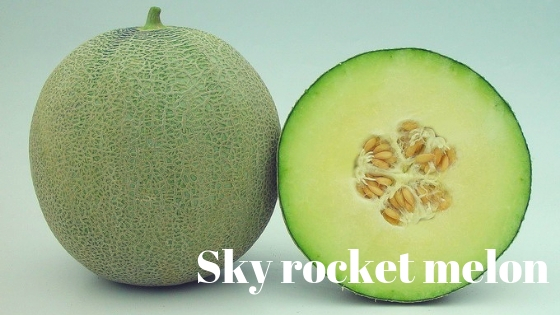
The Sky Rocket melon can grow up to around 6 pounds. Its shape is round melon with green and yellow skin color. The Sky Rocket melon is highly sweet, smoothy, juicy and wonderful fresh taste. It grows easily dan quickly that takes only 65 days until harvested.
Jade dew melon
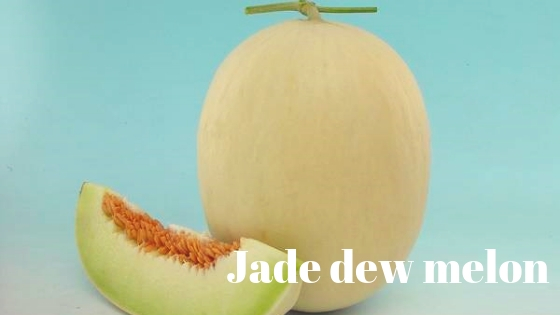
Jade daw is round to circle shape and its rind has tinny web greenish white. Its weight can be up to 4 pounds, which has webbed and greenish color rind.
Its flesh color is milky yellow that taste of this melon fruit is sweet, crunchy, and delicious. Jade daw is a variety of melon plant that easy to growth. It is resistant to crops disease and viruses.
Golden prize melon
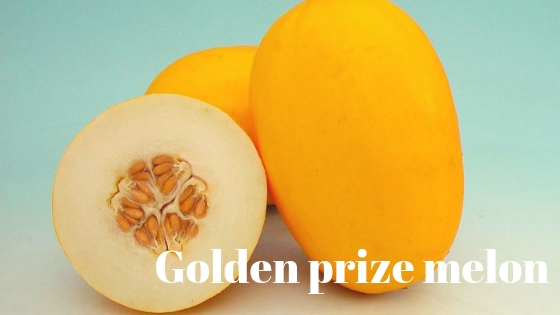
Golden prize is smooth, thick, and bright yellow in rind color and its shape is round to elips. Its flesh color is orange that is high water content. This types of melon fruit tastes delicious and extremely sweet, its texture is crunchy and juicy. Golden prize can be kept in the storage place for along period until it needs to be used.
Ten me melon
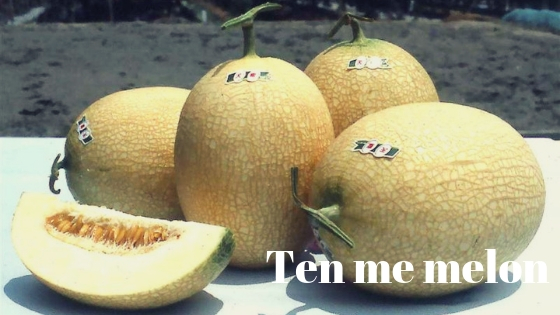
This melon is extremely expensive than other types of melon, has high quality and Its weigh can be up to 9 pounds. The rind of this melon is smooth with white and yellow color. ten me’s flesh is highly sweet, thick, juicy, and pleasant. Although it has high cost, ten me is always seen.
New century
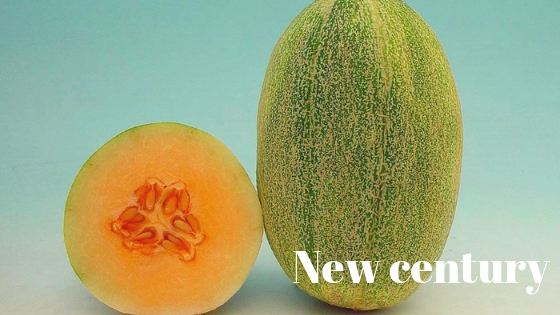
This melon fruit has the shape around to elliptical and greenish to yellow in skin color. Its color flesh is light orange that very sweet, fresh and crunchy because it has lower water content.
New century plant is an annual vine crop from Taiwan that resistance to crop disease and viruses. Its weight is range 1.8 to 4 kg. new century is very affluent product.
Crenshaw melon
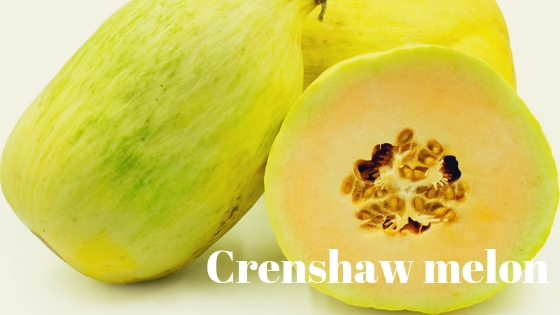
The Crenshaw melon is a hybrid type of melon which has a round to oval shape. Its rind is smooth and the color is yellow-green. The color flesh is yellow that is containing high water content, so that is very juicy but sweet. Its flavor is pleasant, unique, and delicious.
Horned melon
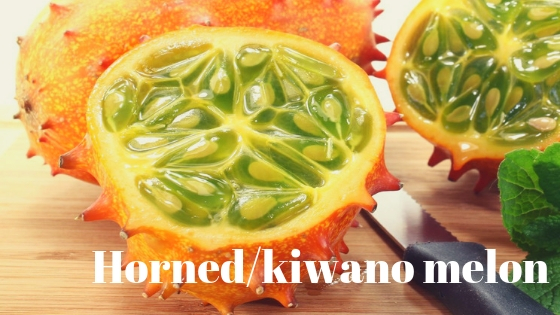
The horned melon has unique rind with oval shape, which bright orange color. This melon fruit has taste mostly similar to mixed of cucumber and zucchini. The Horned melon’s flesh is lime green with seeds inside. This fruit is sweet, juicy and also has wonderful taste.
Kolkhoznitsa melon
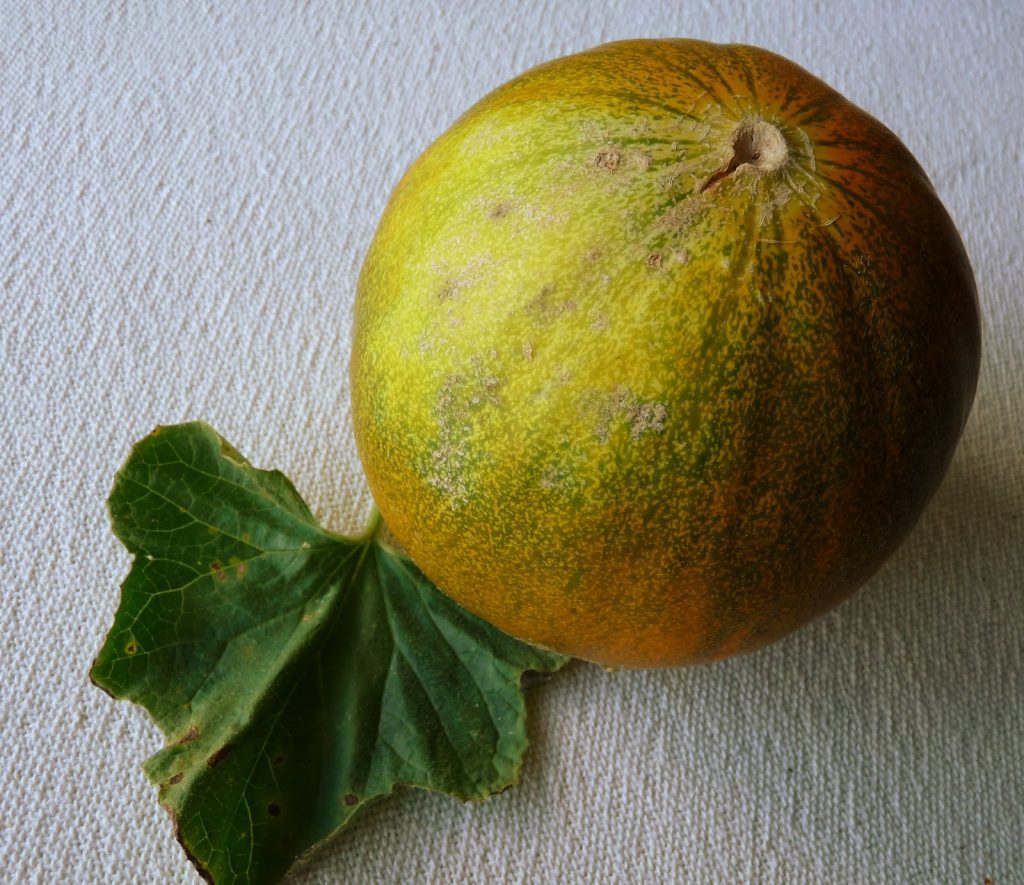
Kolkhoznitsa melons were brought to North America in 1993 by a member of Seed Savers Exchange, who acquired seeds in Krim, in the Ukraine. They were released under the translated name Collective Farm Woman.
Since then, they have been gaining recognition and popularity as a very good early-ripening melon that’s happiest growing in a season that’s warm, but not wildly hot, and which is quite tolerant of cooler weather. Canadians, take note; this one’s for us.
Pro Tips; How to Choose the Perfect Melon to Your Shopping Cart
Make sure the melon has no defects
The first issue you would like to do once shopping for a melon is to examine what it looks like on the skin.
Does it have any brushing, cracks, mouldy patches, or soft spots? If there’s, you must leave it wherever it’s.
You must continuously examine the melon’s skin, or rind, before you are doing anything because if there are any imperfections on the skin of the melon, there’s possible something wrong with the inside moreover.
Make sure the skin is fine
For honeydew melon and watermelon, you must seek for skin that’s dull-looking, since shiny skin can be a signal of a melon that isn’t able to be picked however.
Additionally, in regards to honeydew melons, they must have a color that’s light-weight lemon or yellow, which suggests you would like to avoid those that have an excessive amount of green color.
Muskmelons and cantaloupes should even be inspected on the bottom because they need to have a net-like texture and a color that’s orange or golden. If any melon has an underlying color of white or green, it should positively be avoided.
Size makes a distinction
While you’re inspecting your melon, ensure you choose it up and test how serious it’s.
If you notice the melon is larger and heavier than it looks it should be, this is an honest melon to place in your grocery cart.
Remember, once choosing the right melon, size extremely does matter.
Don’t forget to tap your melon
Just like watermelons, different melons should also be tapped . Take the palm of your hand and tap the melon some times on its skin.
If you notice a sound that’s terribly hollow in nature, your melon has passed its initial take a look at.
Don’t forget to smell it, too
Smelling a melon is one of the simplest ways to make sure it’s ripe enough to shop for. A really ripened melon goes to smell fresh and have a nice aroma.
You should notice a nice fragrance with barely of sweetness, and you should additionally take a look at its hardness whereas you’re at it.
Together with your fingers, press on the a part of the melon that the tracheophyte was attached to, and it should be slightly soft when you touch it.
This technique works especially well with honey dew melons and cantaloupes, however it also works with most kinds of melons as well.
How to grow melon step by step
Requirements for growing melon fruit plants
Melon plants will grow optimally at temperatures of 25 ° -30 ° C and rainfall between 1500-2500 mm / year. The height of the place will affect the taste and texture of the pulp. Melons planted in the medium plains, ranging from 200-900 asl, have a positive effect on fruit quality, such as thick flesh, better texture, small fruit cavities and a sweeter taste.
Determining the Melon Planting Season
The recommended planting season for planting melons is at the beginning of the dry season. Because in this season the plants can get maximum sunlight and to minimize disease attacks.
Determining Melon Planting Media
A good planting medium for melons is loose soil that contains complete macro and micro nutrients.
Choosing a location for melon fruit plants
The location of the land for melon plants should be land that is easy to irrigate, is not windy, is not a flood-prone area, and is easily accessible to vehicles when the harvest arrives.
Knowing the types of melons are best for your area
Before carrying out the planting process, you should first identify the location of the melon planting area.
- In a location with a temperature of 27-25 ° C with an altitude of <200 m above sea level, it is best to plant melons: Oriental sweet melon and Musk melon.
- In locations with a temperature of 25-23.5 ° C and 26-24 ° C with an altitude of 200-650 m asl, it is best to plant melons: Golden Light, Jade, Silver Light, Cantaloupe (Halest Best).
- In locations with a temperature of 23.5-18 ° C with an altitude of 650-1000 m above sea level, it is best to plant melons: Casaba Melon, Melon (Honey Dew and Jade Dew).
- In locations with a temperature of 18.7-12 ° C with an altitude of 1,000-2,000 m asl, it is best to plant melons: Casaba Melon and Cantaloupe.
Melon Cultivation Techniques
The key to success in melon cultivation is starting from the selection of seeds and how to seed them.
How to choose great melon seeds
The thing that influences the success of melon cultivation is the timing of seed selection. A good melon plant must come from hybrid seeds, purity level min. 95%, does not expire, germination min. 80%, the seeds are healthy, not defective and free from pests and diseases. This is done so that when sowing can be obtained and selecting good superior melon seeds.
How to seeding melon fruits
- Soak melon seeds with organic fertilizer and warm water at 45 – 50 ° C for 5 hours to activate dormant seed cells and prevent seed-borne disease so that the seeds grow fast, uniformly and healthily.
- Drain the soaked seeds and broil with a cloth for 2 × 24 hours.
- After the prospective roots appear, move the seeds to the seedling tray that has been filled with seeding media (cocopeat, compost, bokashi, etc.). Keep the seedling media moist by spraying liquid organic fertilizer every 6 hours and covering it with banana leaves or placing it in a dark place.
- Within 2 days the seeds begin to germinate and move them to a place exposed to the sun so that the seeds can develop properly. Always maintain humidity by regularly spraying liquid organic fertilizer every morning and evening.
- Seedlings are ready to move after planting 4 true leaves.
Processing of Melon Planting Areas
Melon plants like loose soil and rich in macro and micro nutrients. Therefore, soil cultivation must be done properly.
How to properly cultivate melon fields
- First, plow the soil as deep as 20 cm so that the soil conditions become loose, then sprinkle with organic fertilizer so that it is rich in macro and micro nutrients in the soil. If the soil pH is below 6 you should sprinkle with dolomite lime.
- Second, spray with anti-pests to prevent soil borne diseases and provide beneficial bacteria in the soil so that the soil is always maintained its health and fertility.
- Third, make beds with a width of 100 cm, a height of about 20 cm and a distance between the beds of 50 cm. During the rainy season, the height of the beds can be made up to 50cm to prevent waterlogged land.
- Fourth, cover the beds using mulch plastic to keep moisture, prevent weeds from growing and keep pests away.
Effective melon cultivation process
After the melon seeds are 10 days old, they are ready for planting. A good spacing is 70 × 60 cm by making holes in the plastic mulch that has been prepared beforehand. After that, plant the melon seeds and then water them with nutrients to avoid stress on the melon seeds.
How to Maintain Melon Fruit Plants Appropriately
In order for melon plants to grow optimally, do an intensive maintenance process, including:
Melon plant technique
Melon plants need a stake in their growth to support the plant so that it does not spread to the ground but can creep upward so that it will get full sunlight to all parts of the plant.
Installation of stakes is carried out 3 days after the planting process so that the stakes do not injure the plants. The stake can be made of bamboo or wood with a length of about 1.5 meters which is attached towards the inside of the bed and so is the installation in the side planting hole so that it will form a cross (X). Then give a long piece of bamboo on top and tie it with raffia.
Melon plant fertilization techniques
Melon plants require macro and micro nutrients for their growth which can be obtained from the fertilization process. Choose an organic fertilizer that can meet the nutrient needs of melon plants.
Spray liquid organic fertilizer on melon plants every 5 days then provide nutrition for melon plants in the root area to meet nutritional needs and anti-pest leaks on the soil around the roots to protect the plant from disease attack.
Technique for watering melon plants properly
When the plants are 1 week old, do watering every morning and evening. After that, it is enough to water it every 2 days. Combine liquid fertilizer and nutrients when watering with a leak system. During the rainy season, make sure the land is not inundated for too long, so always keep the condition and cleanliness of the drainage channels so that they are well maintained.
Melon plant disease or pest control techniques
To control pest attacks, you can install yellow traps on the land. Apart from being environmentally friendly, techniques are also used to reduce chemical residues on the fruit so that the fruit is safe and fit for consumption.
To prevent disease in melon plants caused by pathogenic fungi or bacteria that cause plants to turn yellow, wilted, dry or rotten, it can be anticipated by always regularly applying a combination of nutrients, anti-pests and liquid organic fertilizers that contain complete micro-macro nutrients so that plants grow healthy because plant antibodies are increased.
In addition, the bacteria contained in it will produce antibiotics that function to fight fungal and bacterial pathogens that cause disease in plants.
 Natgeos Green and Vibrant
Natgeos Green and Vibrant

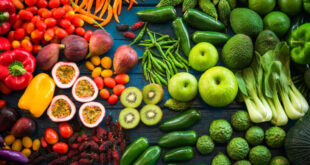
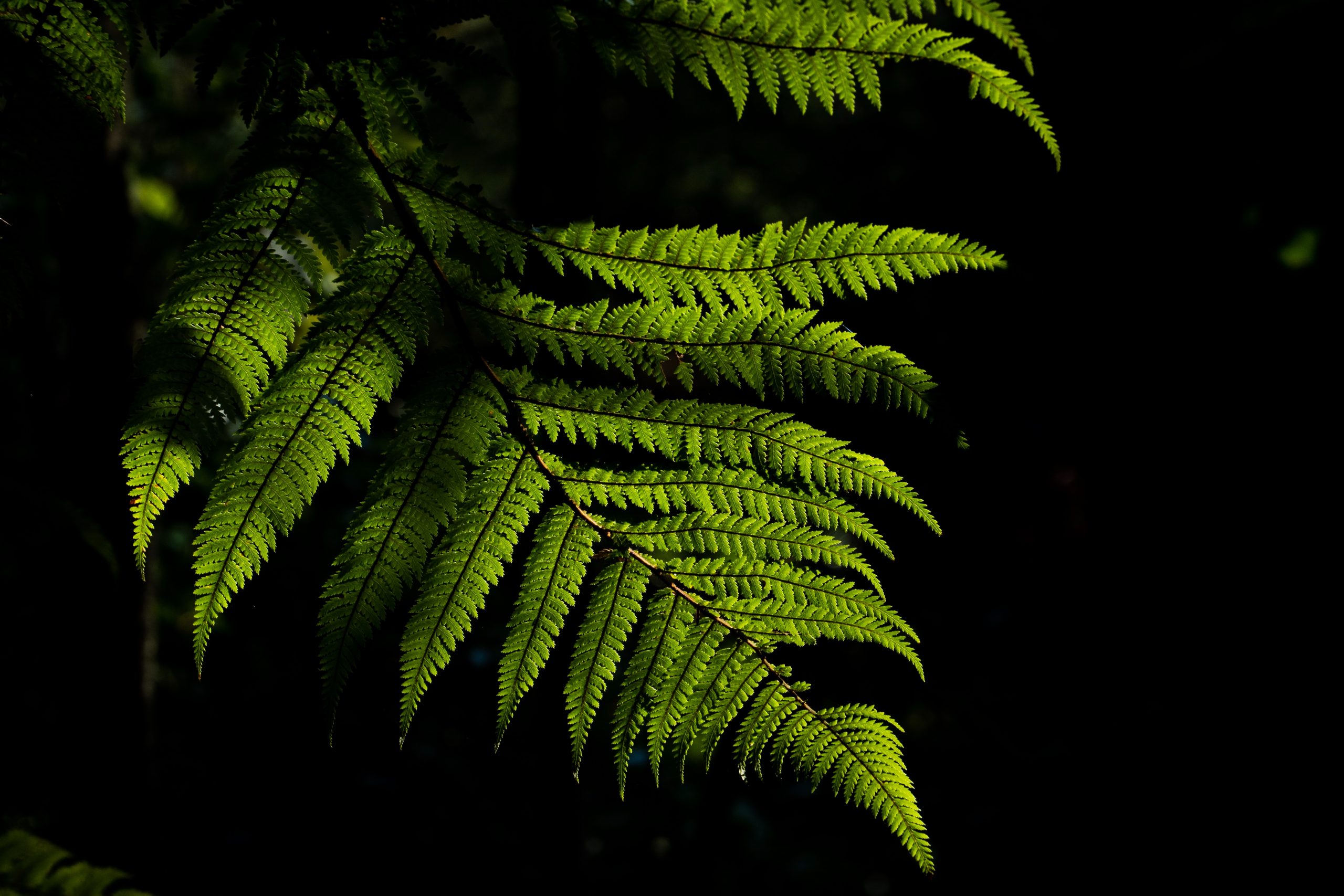
super stronka pozdrawiam